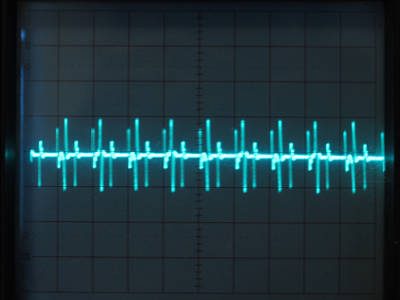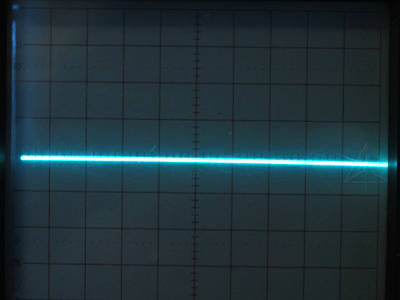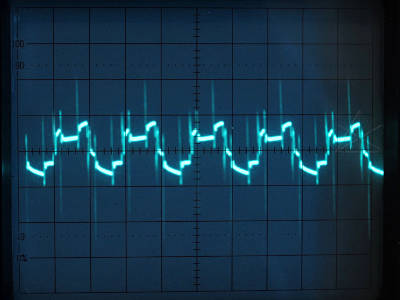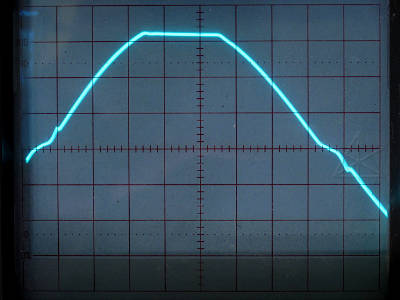

Standby, no chassis connection
Standby, chassis bonded to ground

|
The noise most likely comes from the car. This is one of the battery
leads, AC coupled into the scope. The battery inputs actually float
above and below the unit's neutral reference by about 75V, with this hash
riding on top. When the engine is running to charge the battery,
all of this wiggles up and down a bit.
This is about 0.1 ms/division again. Remember how we observed that the Prius battery ground-fault detection uses about a 5 KHz signal? Here it is. |

|
The output does start to flatten and clip a bit at very high load. |